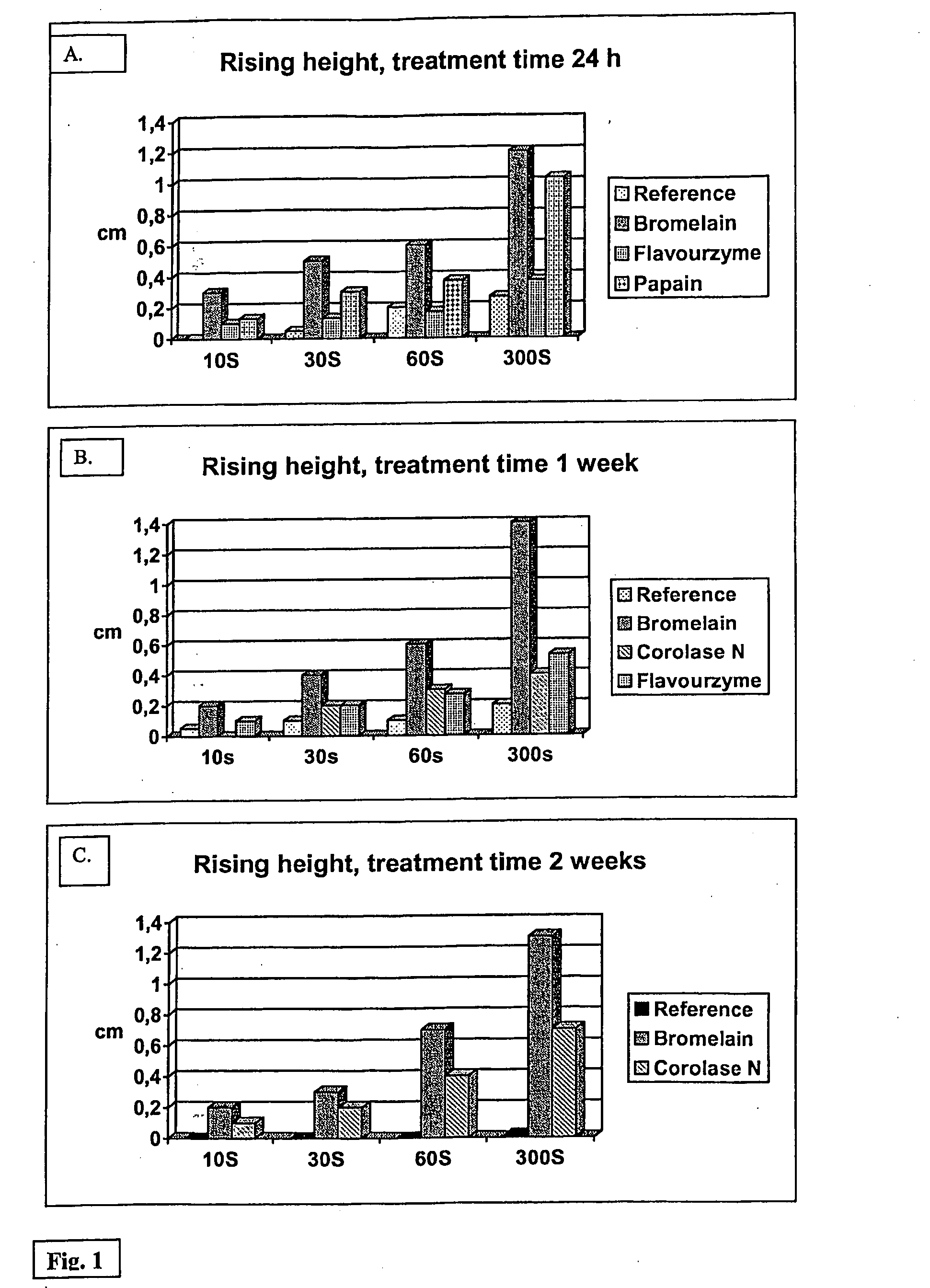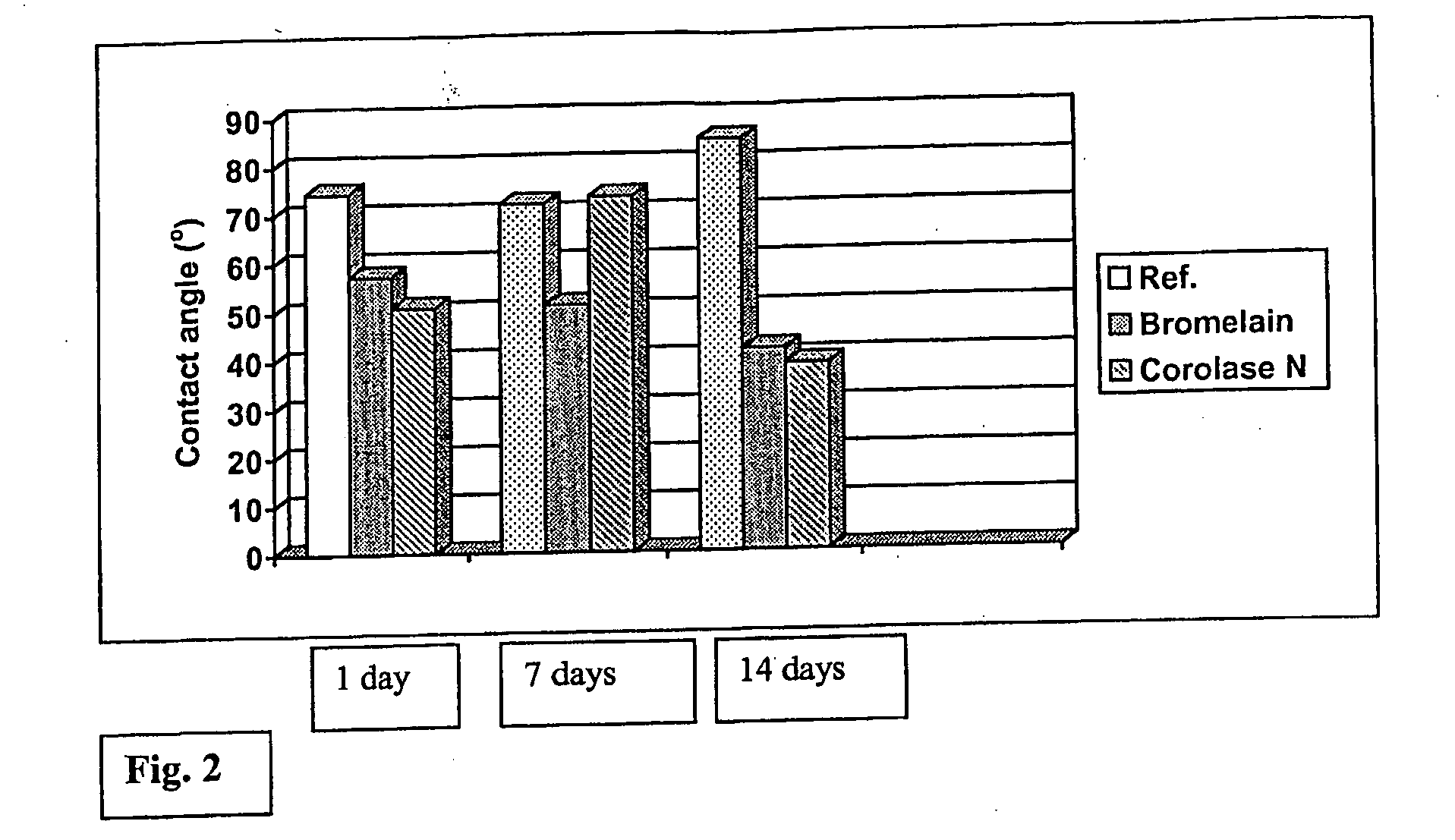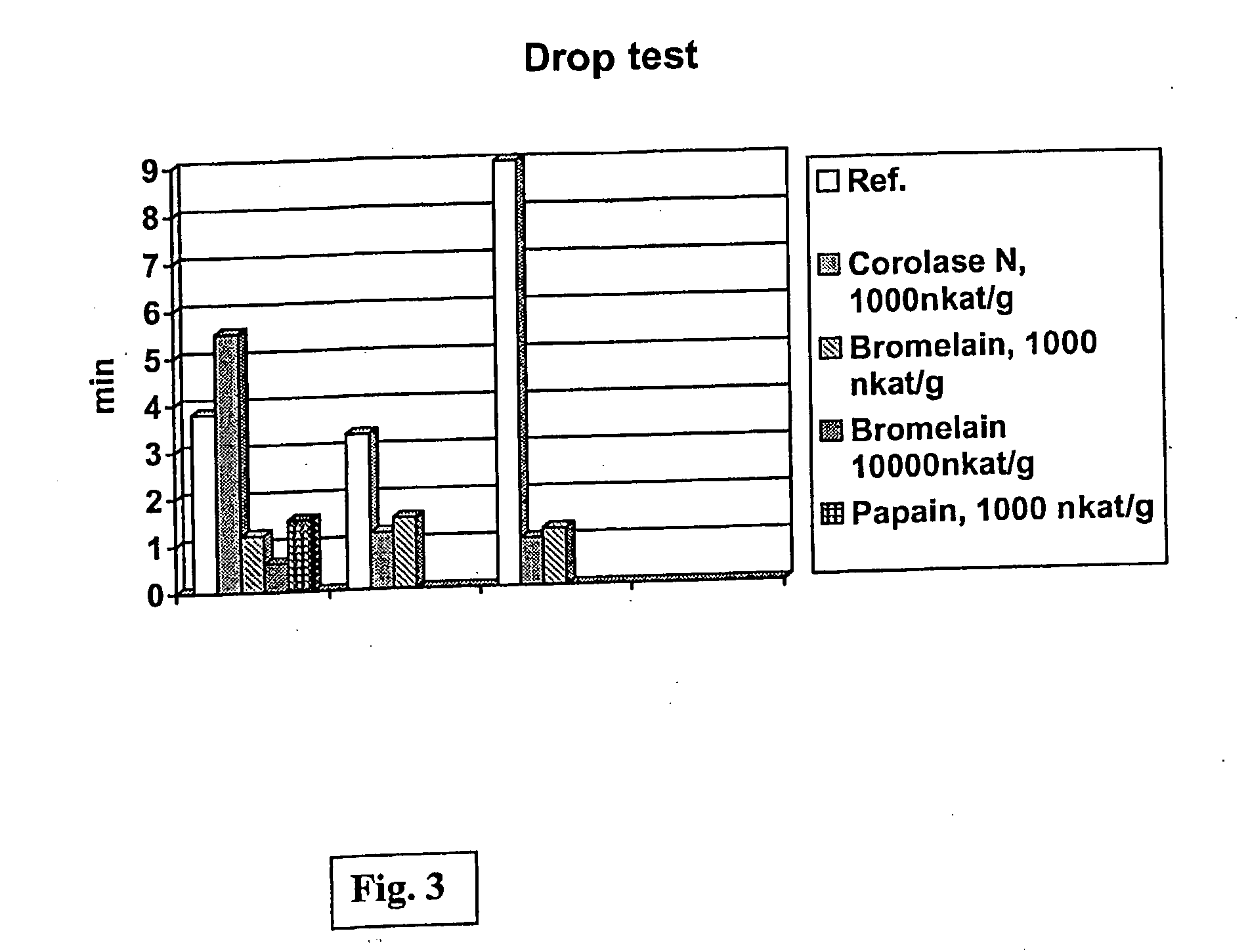Method for Modifying Polyamide
a polyamide and polyamide technology, applied in dyeing process, fibre treatment, chemistry apparatus and processes, etc., can solve the problems of irreversible yellowing of fibres, deterioration of other product properties, unwanted changes in the macroscopic behaviour of fibres, etc., to improve finishing processes, less harmful to the environment, and improve the effect of end-product properties
- Summary
- Abstract
- Description
- Claims
- Application Information
AI Technical Summary
Benefits of technology
Problems solved by technology
Method used
Image
Examples
example 1
Increase of Carboxylic End Groups of Polyamide 6.6 Monofilament with Proteases
[0071]Two types of polyamide 66 monofilament yarns (PA yarns, Type F111, diameter 0.035 mm and Type D183 diameter 0.5 mm, Rhodia Industrial Yarns AG, Emmenbrücke, Switzerland) were treated with protease enzymes. Before enzyme treatments PA yarns were extracted with diethyl ether to remove spin finishes. Extraction was performed in a Soxhlet-Extractor and about 150 ml diethylether was used for the extraction of about 10 g polyamide. Extraction time was 2 hours. After extraction the filaments were air dried.
[0072]2 g PA yarn was treated in 0.1 M Na-phosphate buffer 7 or 0.1 M Na-citrate pH 4.5 in liquid ratio 1:15 with 20 and 1000 nkat protease / g of yarn at 50° C. for 2 and 24 h. Protease activity (nkat) was measured as in example 2. Four different types of commercial protease enzymes were used: Protex Multiplus L (Genencor Intl, serine protease, treatment pH 7), Corolase N (AB Enzymes GmbH, metallo-protease...
example 2
Improvement of Hydrophilicity of Polyamide Fabric with Proteases
[0081]Polyamide 66 fabric (63 g / m2, Rhodia Industrial Yarns AG, Emmenbrücke, Switzerland) was washed with OMO detergent (Lever Faberge) in a domestic washing machine Hoover with a washing programme no. 7 at 40° C. to remove the spin finishes. 2 g PA fabric was treated in 0.1 M Na-phosphate buffer 7 or Na-citrate buffer pH 5 in liquid ratio 1:20 with 1000 nkat and 10000 nkat / g of fabric Bromelain, 1000 nkat / g Papain and Corolase N or with 1 mg protein / g of fabric Flavourzyme at 50° C. for 1, 7 and 14 days. Protease activity (nkat) was measured according to Endo-protease assay using Protazyme AK tablets (Megazyme International Ireland Ltd., Ireland). The protein concentration was measured according to Lowry et al. (Lowry, O. H., N. J. Rosebrough, A. L. Farr, and R. J. Randall. 1951. Protein measurement with the Folin phenol reagent. J. Biol. Chem. 193:265). Different commercial protease enzymes were used: Bromelain (cyste...
example 3
Improvement of Dyeing Properties of Polyamide Fabric with Proteases Methylene Blue Dyeing
[0084]Polyamide 66 fabric was treated with 1000 and 10000 nkat / g of Bromelain Conc. (Genencor Intl), 1000 nkat / g Corolase N (AB Enzymes GmbH) and with 1 mg / g of Flavourzyme (Novozymes) as described in example 2. Enzyme-treated fabrics were dyed with methylene blue, which is a cationic dye.
[0085]Methylene blue dyeing was performed at 85° C. with 0.1% methylene blue (Methylene blue B, Merck) at liquid ratio 1:100 for 5 min. Excess dye was rinsed from the fabrics with water. Dyed fabrics were dried on filter paper over night. Colour of the fabric was measured with Minolta Chroma Meter using L*a*b* system.
[0086]L-value (lightness) was clearly decreased in both Bromelain (1000 and 10000 nkat / g) and Corolase N (1000 nkat / g) treated fabrics after dyeing with methylene blue indicating better dyeing as compared to the reference (FIGS. 4A and 4B). Dyeing was improved according to the enzyme dosage with Br...
PUM
| Property | Measurement | Unit |
|---|---|---|
| temperature | aaaaa | aaaaa |
| Tg | aaaaa | aaaaa |
| temperature | aaaaa | aaaaa |
Abstract
Description
Claims
Application Information
 Login to View More
Login to View More - R&D
- Intellectual Property
- Life Sciences
- Materials
- Tech Scout
- Unparalleled Data Quality
- Higher Quality Content
- 60% Fewer Hallucinations
Browse by: Latest US Patents, China's latest patents, Technical Efficacy Thesaurus, Application Domain, Technology Topic, Popular Technical Reports.
© 2025 PatSnap. All rights reserved.Legal|Privacy policy|Modern Slavery Act Transparency Statement|Sitemap|About US| Contact US: help@patsnap.com



